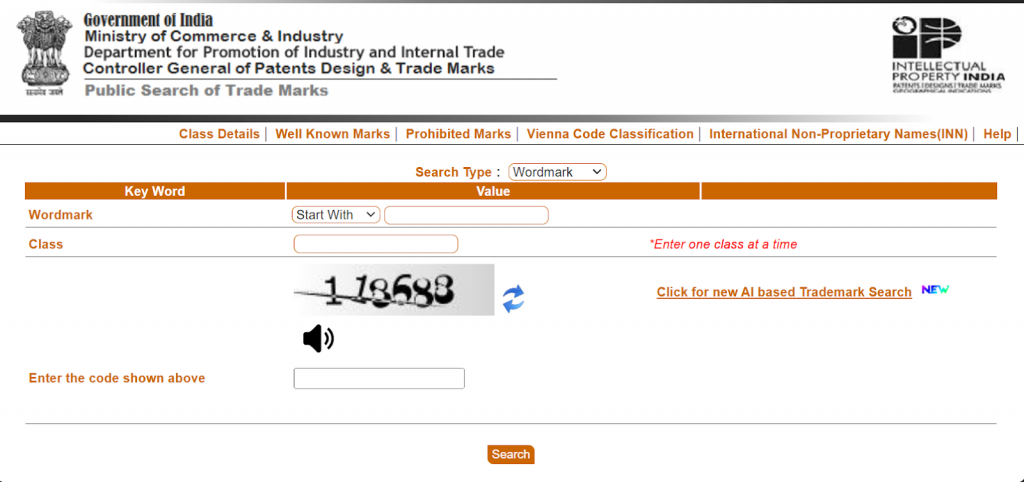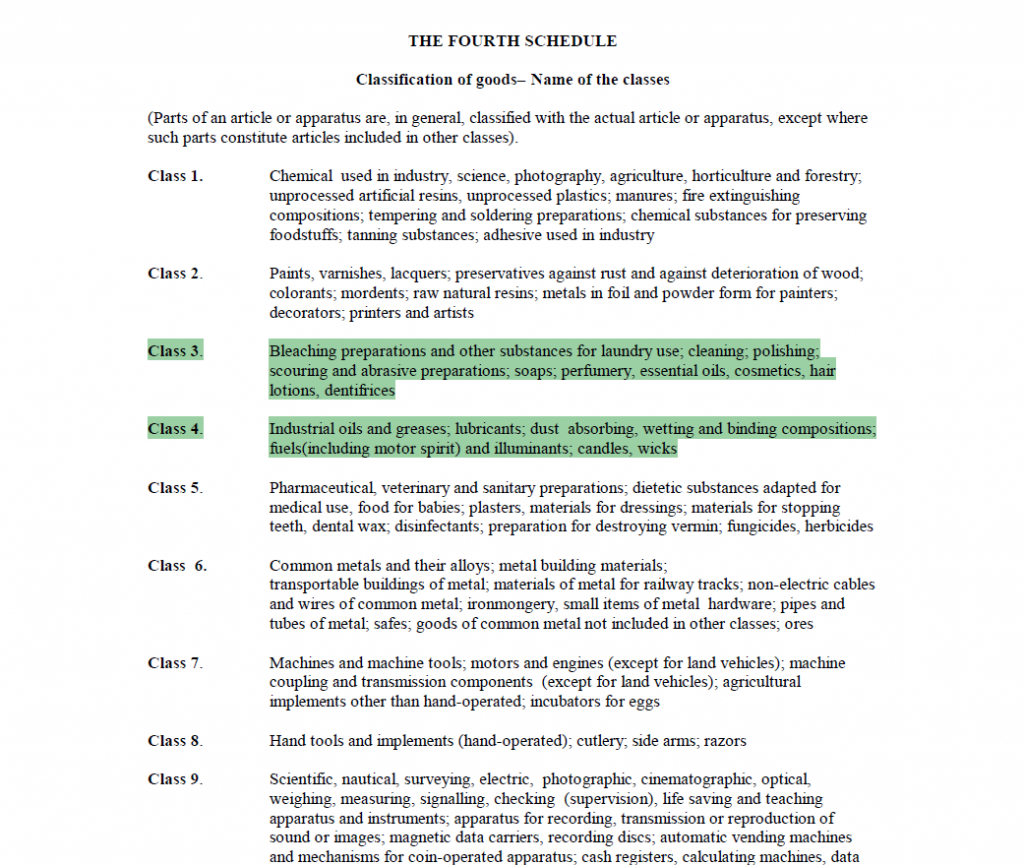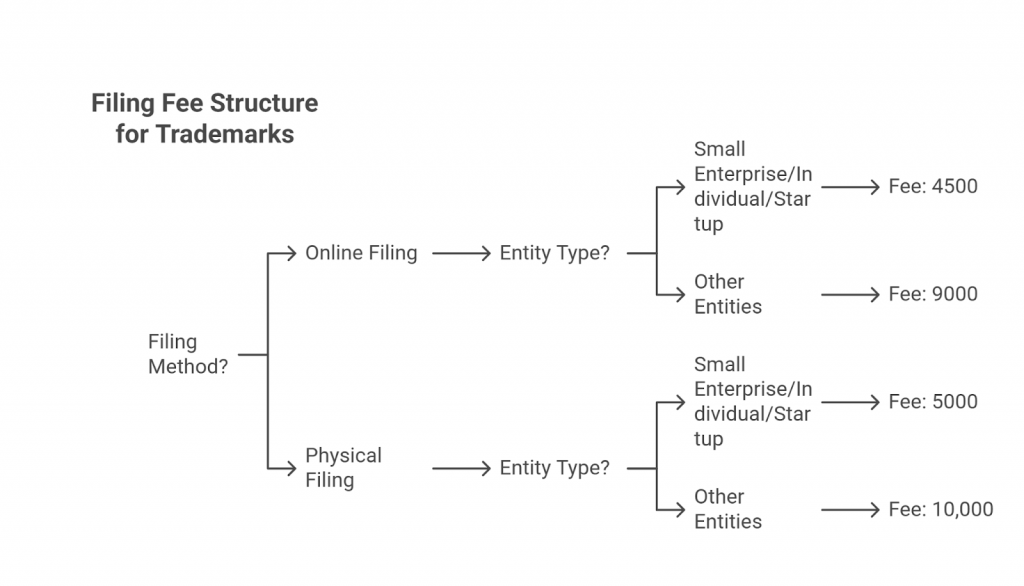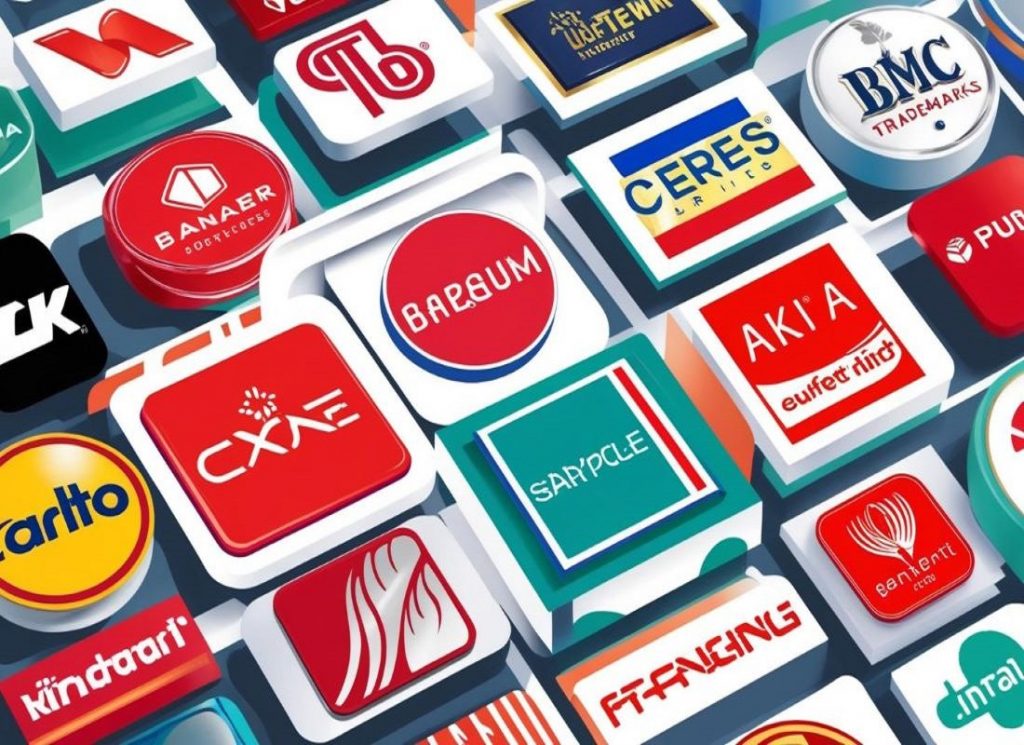This article deals with the trademark registration process in India. You will learn the legal concepts, the application process, and all related concepts about the registration of a trademark. If you are a law student, lawyer, or IP attorney, this guide will help you.
Table of Contents
Introduction
My friend, Tara, and I were having our regular lunch session at her house, and the hot new topic was candles. It’s only been a few months since she started selling candles. It was a passion project, which is now slowly getting picked up. She used to make and sell it to her neighbours and then gradually to her whole apartment. Everyone seems to like it as of now, so she thought of putting up a small shop just outside her apartment.
She was figuring out how to run this small business. I looked down at her messy kitchen counter, which is where she usually works because she is always next to the stove, making candles. My eyes were fixated on a small drawing that she had done, and she was quite proud of.
It was two candles holding hands, and at the bottom, she had written ‘Candlemonium’, which is what she was planning to call the business. I didn’t know if it was cute and quirky or lame. Maybe a bit of both?
Anyway, while I was looking at the candle, Tara thought out loud, “Shouldn’t I be protecting my drawing because that was going to become the logo of my small business?”.
Well, of course she should, and I told her the same. She needs to trademark the logo in order to gain ownership of it. I decided to help her out. So if you are reading this because you are looking for something to get trademarked, then read on because I will be taking you along through the whole process.
Trademarks, patents and whatnot
After my conversation with my friend, I realised I had used so many legal terms such as trademarks, copyrights, etc, and I also told her that her logo would fall under trademark. So what is it, exactly? In India, trademarks are covered under the Trademark Act of 1999. What does it say exactly about trademarks? We’ll look at the definition, according to section 2(1)(zb):
“Trade mark means a mark capable of being represented graphically and which is capable of distinguishing the goods or services of one person from those of others and may include shape of goods, their packaging and combination of colours”
And according to WIPO,
“A trademark is a sign capable of distinguishing the goods or services of one enterprise from those of other enterprises. Trademarks are protected by intellectual property rights.”
So, trademarks protect any brand, they identify and protect the brand or any product. Tara wants her logo and brand of ‘Candlemonium’ to be protected, and hence she needs to register a trademark for the same.
Why get a trademark in the first place?
But why should Tara register something for a trademark?
Don’t be that one person who doesn’t do it for whatever XYZ reason. If you want to protect your logo and brand, then you must do it, or you will be a, dare I say, a fool. If you are not convinced, then we’ll go over the benefits.
Exclusive rights
Filing a trademark registration and getting a trademark for your business or product means that you get exclusive rights over that trademark. Once Tara registers for a trademark for the logo and the mark, she will get exclusive rights and can take legal action if her mark is used without her permission.
Building goodwill
Getting your trademark and getting your product registered means that you also build goodwill. You essentially get a trademark to reach more people and customers who would want your product or service. Getting a brand attached to your product or service means that your product can be trusted, and when your brand becomes more known, they can trace it back to your company and trust the product.
Product quality assurance
Once you have your trademark, ensure that you sell good-quality products, and when you do that, customers will connect your brand to a trusted, good-quality product, which means that your product will do well in the market.
Protection against potential infringement
If you don’t protect your brand, then if and when it is misused, you might have no legal backing, which may leave you vulnerable. A trademark will safeguard your business from potential infringement. Infringement happens when someone uses your logo or mark without your permission.



When you see these logos, you don’t really need to see the names of these brands to know what they are, right?
That’s essentially what a trademark is.
When you are using these, you know what you are getting, and it doesn’t matter if you are a fan or not; you see them and you recognize them.
This is what you also get when you get your product trademarked, and it also brings us to the next question:
Logo mark or word mark?
Now, while I was talking to Tara, I explained to her what a logo mark and a word mark are. Now it was up to her to figure out if she wanted to register the logo and mark separately or together. A logo mark is getting your logo trademarked, and a word mark is getting the name of the business trademarked.
You might be in a situation where Tara and I are in right now, when there is a dilemma about whether to get trademarked, and you should file them separately or together? Valid concerns. Before we decide, we’ll need to answer a few questions:
(i) Are we going to be changing our marks pretty often?
(ii) Are we working with a budget?
(iii) How strong do we want our protection to be?
Are we going to be changing our marks pretty often?
Talking about the first one, why is it important? It is important because you might not always want to stick to the same designs or names. If in the future you want to change the design of your logo, then it will be a little harder to do so if you have trademarked them both together. If the logo is changed, then the name might lose its value, and you might have to re-register your brand.
For example: Let’s take Nike, if they had originally registered, their infamous swoosh along with the name ‘Nike’, then tomorrow if they decide to make small or big changes to the logo, then they will have to register for trademark again with the new logo + the name, since the word ‘Nike’ alone won’t have a value.
However, right now, they have two separate trademarks for the swoosh as well as the name ‘Nike’, which means that even if they make any upgrades to their logo, their name will still be protected under the separate trademark.
When do you not need to worry about this? Well, if you are 100% sure about your logo and your name and if you think you will never change it, then you can proceed to get both trademarked together. You can be sure if you have some emotional attachment, like in the case where your name or logo is made after your pet, a family member, etc.
Are we working with a budget?
Why does the budget matter? Registering two things separately is going to be more expensive, so if you are working with a budget, then it’s best to register whichever you think should be prioritised and get that registered.
How strong do we want our protection to be?
Okay, coming to protection, if you are going to have only your logo trademarked, then your name is still in jeopardy. Let’s say Tara is going to trademark her candle logo, where it’s written ‘Candlemonium’ on it.
In this case, her logo will be protected, but people are still free to use the word ‘Candlemonium’; they can use it in different ways, fonts, slap it on different products and call it a day.
Not cool, right? But if she gets the name trademarked too, then it is a separate entity from the logo, and both of them will be safe and protected.
Of course, there are so many different trademarks, and you can get one trademark according to your product. There are sounds, shapes, patterns, words, colours, the list goes on.

Most of you out there can recognize this shape and connect it to the brand. Did you guess it?

It’s Coke! In the early 1900s, the bottle was patented, and in 1961, it was trademarked too. A study that was conducted in 1949 showed that less than 1% of Americans could not identify the bottle without the name. Insane right?
Also, you know that ‘lightning pose’ that Usain Bolt does after a run? Can you guess where I am going with this? Yes, that gesture is trademarked!
What I am trying to say is, you can get anything trademarked if it is unique enough. So now let’s see what criteria we have to meet in order to get one.
Criteria for Trademarks
Certain criteria have to be met for you to successfully get a trademark. What are they?
- Your trademark should have a distinctive element to it. Which means that it cannot be generic. It should stand out and be unique and different from everything that already exists.

Okay, let’s say this is the logo I want to use, but can I use it? It looks familiar, right?

Yes, you can see the difference between the two, but is the difference significant enough to be differentiated immediately? Probably not. I can argue that the other one is a bit rounder and has a different colour and shape, but it still has the potential to create confusion among consumers.
And Nike also uses various colours on different products, so it doesn’t matter that my tick is purple. Nike has become so famous that the ‘Tick’ itself has become exclusively theirs. So I probably won’t go ahead with this because it might get rejected.
But let’s look at something else.


When we look at these two, yes, both of them have an ‘M’, but they differ in shape, colour, and font, an average consumer will not get confused between the two since the difference is clear and a distinctiveness factor exists.
- The trademark should be able to be represented graphically, which means that the mark should be capable of being put on the register in a physical form and also being published in the journal.
If you are thinking, how on earth would that not be possible? Well, if you want to trademark a smell that says “smells like fresh cut grass” or a texture that says “feel of velvet on a wine bottle”, there is no easy way to graphically depict a smell or a texture.
Make sure that the criteria are met. If you overlook the uniqueness, then your trademark will most likely get rejected. Let us make this simpler and go over all the reasons your trademark might get rejected:
Grounds for rejection
- Lack of distinctiveness – Like I mentioned before, your trademark should have a distinctive element to it. A trademark that consists of common words or industry terms may not be granted exclusive rights, and if the trademark is too generic or descriptive, it won’t qualify.
At the same time, if your trademark is too similar to an already registered mark, such as the swoosh in the Nike symbol, it may cause consumer confusion and will be rejected. - Failure to represent graphically – Non-traditional marks like smells or textures can be difficult to represent in a way that meets legal requirements. Also, Trademarks that use common geographical names, e.g., “Dubai Perfume”, may be rejected unless they have acquired distinctiveness.
- Deceptive or misleading marks – If the mark falsely implies qualities that the product doesn’t have, then it would be misleading the customers, and your trademark will likely get rejected. For example, if Tara adds “healing properties” to her candle without anything of that sort on her candle, her trademark application will be denied.
- Violation of public policy or morality – Offensive, scandalous, or illegal terms won’t be accepted as trademarks.
- Failure to use the mark in commerce – What does this mean? If the trademark is not actively used or lacks intent for commercial use or business, the application may be denied.
Once you ensure this is in order, you’ll need to take some more steps before the filing stage.
What should you do before filing for a trademark?
Okay, we have gone through the basics. Now things get real. Before I tell you how to draft and file, we need to do some things before filing for a trademark.
Trademark search
I truly believe that this is arguably the most important part of pre-filing considerations. What you need to do is conduct a trademark search wherein you look for anything similar to the one you want to get trademarked. It could be your logo, a name, or anything else, but you need to make sure something like it doesn’t already exist.
If you end up skipping this step and directly filing, then all your efforts will be in vain since your trademark will only get rejected.
You can go through the government website database to do your research. Click this if you want to check it out.

This is what the page will look like. Go ahead and do your research thoroughly.
Identifying the right class
So now, where should your trademark fall? There are many classes when it comes to trademarks, and each class has a set of different goods or services that are categorized under it.
There is something called the Nice Classification (NCL) system, which is used for categorizing trademarks, and it is internationally recognized. There might be a chance that your trademark might fall under more than one category.
- Class 1 – 34 covers goods (eg, chemicals, clothing, food, and so on)
- Class 35 – 45 covers services (eg, legal services, advertising, technology consulting, and so on)
If you need a little bit more clarity about the goods and services, then refer below:
Goods – If a product cannot be classified with the aid of the List of Classes, the Explanatory Notes and the Alphabetical List, the following remarks set forth the criteria to be applied:
(a) A finished product is in principle classified according to its function or purpose. If the function or purpose of a finished product is not mentioned in any class heading, the finished product is classified by analogy with other comparable finished products, indicated in the Alphabetical List. If none is found, other subsidiary criteria, such as that of the material of which the product is made or its mode of operation, are applied.
(b) A finished product which is a multipurpose composite object (e.g., clocks incorporating radios) may be classified in all classes that correspond to any of its functions or intended purposes. If those functions or purposes are not mentioned in any class heading, other criteria, indicated under (a), above, are to be applied.
(c) Raw materials, unworked or semi-worked, are in principle classified according to the material of which they consist.
(d) Goods intended to form part of another product are in principle classified in the same class as that product only in cases where the same type of goods cannot normally be used for another purpose. In all other cases, the criterion indicated under (a), above, applies.
(e) When a product, whether finished or not, is classified according to the material of which it is made, and it is made of different materials, the product is in principle classified according to the material which predominates.
(f) Cases adapted to the product they are intended to contain are in principle classified in the same class as the product.
Services – If a service cannot be classified with the aid of the List of Classes, the Explanatory Notes and the Alphabetical List, the following remarks set forth the criteria to be applied:
(a) Services are in principle classified according to the branches of activities specified in the headings of the service classes and in their Explanatory Notes or, if not specified, by analogy with other comparable services indicated in the Alphabetical List.
(b) Rental services are in principle classified in the same classes as the services provided by means of the rented objects (e.g., Rental of telephones, covered by Class 38).
(c) Services that provide advice, information or consultation are in principle classified in the same classes as the services that correspond to the subject matter of the advice, information or consultation, e.g., transportation consultancy (Cl. 39), business management consultancy (Cl. 35), financial consultancy (Cl. 36), beauty consultancy (Cl. 44). The rendering of the advice, information or consultancy by electronic means (e.g., telephone, computer) does not affect the classification of these services.
You can find the different classes here.

Since Tara is going to be selling candles, plus scented candles, it will fall under Class 3 and Class 4.
Documents
This is something basic, but I will put it here as a reminder anyway. Make sure to gather all your documents and keep them ready. These include
- Clear representation of your trademarks,
- Proof of claim of use if your mark is already in use in the market,
- Details of the applicant, which are your details, and you can be an individual, a company or a partnership firm.
Okay, so I have covered all the basics, everything you need to do and consider before getting to the filing bit, so now we can get onto it.
Filing and registration
Form TM – A is what is used in India for filing trademark applications primarily, and this one is the prescribed form under the Trade Marks Rules, 2017.
So if you want to register, renew, or do any sort of modifications, then this is the one to use. You can also use it for claiming convention priority, which is essentially filed if you have already filed the trademark in some other country.
So, can trademarks be filed only through this? Well, yes, it is mandatory for filing applications here in India, and there is no other alternative for new trademark registrations. However, there are different modes for filing trademark applications through TM-A, which are online and offline.
- Online is the generally preferred method, and it is also more efficient. You can do it on the IP India website, and you should submit your digital signature for authentication.
- If you are a little old school and don’t prefer technology in general, then you have the option to file it physically. You need to submit the printed copy of the same form, which is form TM – A along with the supporting documents to the appropriate trademark registry office.
Physical filing will cost extra; refer below to get a better understanding:

Okay, now let us look at the form.

So this is what the form looks like, you need to fill in all the details, but let’s break it down on how you should be describing your marks. I will give you examples below:

This is the logo we are going to be referencing, ok?
- Applicant details
Here, just put in your details, and be sure to make no mistakes.
Example for Candlemoniom:
Applicant Name: Candlemoniom LLC
Address: 12th Lane, Mumbai, Maharashtra – 400001
Nationality: Indian
Entity Type: Individual
- Trademark details
Here you need to give the representation of the trademark (word, logo, or combination) along with a description of the mark (if it includes design elements or colours).
Trademark: “Candlemoniom” with a logo of a candle and flame.
Description: The mark consists of the word “Candlemoniom” in a stylized bubble font, with two minimalist smiling candles holding hands. Colours claimed: dark brown (#654321) for the word, gold (#FFD700) for the candle, and yellow (#FFF00) for the flame.
- Class and goods/services
Remember about the class I had talked about? Here is where you need to specify the class(es) under the Nice Classification and also provide a clear description of the goods/services.
Class: 3 & 4
Goods/Services: Candles, scented candles, wax melts, and candle accessories.
- Basis for filing
Here you need to mention whether the mark is already in use or proposed to be used. I have been using this logo since January of this year, so I am going to mention that.
Basis for Filing: Already in use since January 15, 2025.
- Specimen of the Trademark
Attach a clear image of the trademark as it is used (e.g., on product packaging or labels).
Specimen: A label showing the mark “Candlemoniom” and the candle logo on a scented candle product.

(it would look something like this)
- Declaration
You need to provide a statement which basically confirms the accuracy of all the info you have provided.
Declaration: I, Tara Kumar, authorized signatory of Candlemoniom, hereby declare that the information provided in this application is true and accurate to the best of my knowledge.
So after this, you will be mostly done. You also need to attach a power of attorney if a lawyer or an agent is filing the form, and this is done through Form 48. You can find all the forms that you might need here.
And you need to pay the prescribed fee, which I have already mentioned above. After submission, you will receive an acknowledgement receipt with the application number.
If you have any doubts about the process, go through this standard operating process of trademark application before you proceed.
Using trademark symbols
Let me also tell you about trademark symbols and how to use both of them.
™ Symbol
So this ™ (Trademark) symbol is used when an applicant has filed a trademark application with the registrar. This can be used by me immediately after I have submitted the application.
I advised Tara to use this because it serves as a notice to others that the mark is in the process of registration, and it acts as a warning against potential infringement that could lead to legal disputes.
But also keep in mind that using the ™ symbol does not mean that trademark protection has already been granted. It just indicates that the application that Tara has submitted is under review, but it also means that third parties should avoid going ahead and registering the logo because she has already done it.
I told Tara to use the ™ symbol because she has applied a mark for a product, but if she had applied a mark for a service, then she should be using the (℠) mark.
® Symbol
If you have successfully gotten your trademark registered officially then you can use the ® (Registered) symbol. It signifies that the mark is legally protected under trademark laws and regulations and no one, company or individual can use this symbol unless their trademark has been successfully registered.
If anyone uses it without authorization, then it will be considered trademark infringement and can result in legal consequences. Under section 107 of the Trade Marks Act, criminal liability may include fines or imprisonment for up to three years and in civil cases, courts may grant temporary or permanent injunctions, award damages, and require the infringer to return any profits earned from the unauthorized use of the mark so don’t get into trouble and be careful while using these symbols.
This is essentially how you should proceed with trademark filing. What happens when someone copies your mark or logo? That is where Trademark Opposition comes in. Stay tuned for that one.






 Allow notifications
Allow notifications
